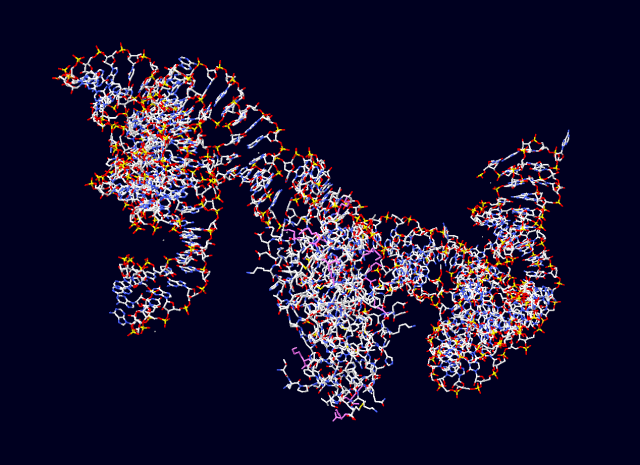Quest for self-replicating RNA edges closer to life’s possible origin
Ars Technica » Scientific Method 2013-10-25
The discovery of nucleic acid molecules that can catalyze chemical reactions has revolutionized thinking about the origin of life. These catalytic RNAs, called ribozymes, showed that a single molecule could embody two of the major aspects of life: genetic information and chemical activity. They also raised the intriguing possibility that it might be possible to find an RNA molecule that could copy itself. After all, once you have a single self-duplicating molecule, you would quickly end up with a large collection of self-duplicating molecules competing for resources. Evolution would be off and running.
So far, though, efforts to make a self-replicating ribozyme have come up short. Most RNA molecules with this sort of activity have been around 200 bases long and have tended to stall before copying more than a few dozen bases. But now, scientists have produced the first molecule that can copy RNAs longer than itself. The scientists found it by selecting for RNAs that work in conditions that are normally the death of biochemical activity: sub-zero mixtures of ice and water.
Makin’ copies
The path to a potential self-replicating RNA has, so far at least, been a bit convoluted. Starting with a collection of RNA molecules with random sequences, researchers come up with a ribozyme that could link two RNAs together (termed a ligase). Rounds of mutation meant to improve that activity succeeded in doing so, but they also popped out a different class of molecules entirely; they could make copies of a specific group of short sequences. Further experiments with mutation and selection made these catalytic RNAs work more generally and extended the molecules they could copy to longer sequences. But the RNAs themselves were over 200 bases long, and they tended to fall short of copying molecules that were much smaller than that.
Read 7 remaining paragraphs | Comments





